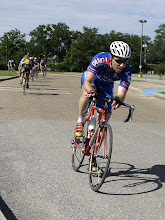Mountain Bike Fit
It's great to be back into mountain biking again! My last mountain bike was a dual suspension. This time I picked up a single speed. I've always wanted one because they are so simple. It's back to the basics.
Here's the good news for you. It will be an opportunity for me to go through the fit process for a mountain bike. Proper fit isn't just for roadies and triathletes. There are many similarities between various bike fits. They all have the same goals. On the mountain bike, I want to be in the best position to apply power to be the pedals. Also, I want to be balanced between the saddle and the handlebar so that I have the best control.
Handlebar width can easily determined. I can cut the bar so that bar fits you best.
Most of all, once you have been fit, you will get the most power and performance possible.
Ride fast.

